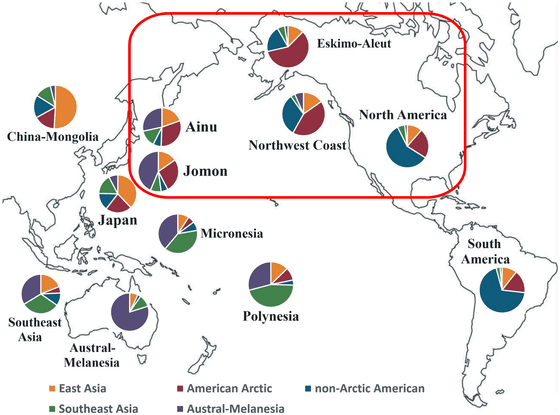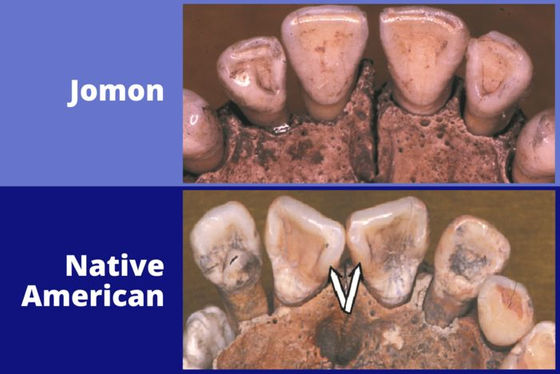The theory that 'Native American ancestors are Japanese' is denied

Past research focusing on the similarities between stone tools excavated in the United States and Jomon stone tools has proposed the theory that 'Isn't the ancestor of Native Americans Japanese?' However, a new study comparing Native American and Jomon fossils provided evidence to overturn this theory.
Full article: Peopling the Americas: Not “Out of Japan”
Popular theory of Native American origins debunked by genetics and skeletal biology --Taylor & Francis Newsroom
https://newsroom.taylorandfrancisgroup.com/popular-theory-of-native-american-origins-debunked-by-genetics-and-skeletal-biology/
Analysis of ancient teeth questions theory that Native Americans originated from Japan | Live Science
https://www.livescience.com/native-american-origin-theory-debunked
A study published in 2019 pointed out that the stone tools excavated in the United States about 15,000 to 16,000 years ago are very similar to the stone tools of the Jomon period in Japan. It is also known that the Beringia of this era was closed to ice, and the land route connecting the Eurasian and North American continents was difficult for humans to move. From this point of view, archaeologists argued, 'Are the Native American ancestors people who came by boat from Japan?'
The theory that 'the first American may have come from Japan' suddenly emerged from the newly discovered stone tools --GIGAZINE

According to Professor Richard Scott of the Faculty of Anthropology at the University of Nevada, Reno, the theory that Native American ancestors are Japanese is widely accepted by archaeologists. However, Professor Scott and his colleagues, who were not convinced by the idea that 'the stone tools are similar and therefore have the same origin,' set out to test the dogma.
Professor Scott's research team focused on fossil teeth of ancient people. The research team compared tooth fossils excavated from the Americas and Asia using a method called ASUDAS , which quantifies and classifies tooth shapes and properties.
The result is below. The teeth of Jomon and Ainu people were relatively high in the 'Australian Melanesia Group (blue-purple)' and low in the 'Non-Arctic Americans (blue)', while north. The results show that teeth collected in the United States are more likely to be classified as 'Arctic Americans (brown)' or 'Non-Arctic Americans.'

These differences are evident in the appearance of the teeth. Of the following, the Jomon maxillary anterior teeth (upper) are flat, while the Native American maxillary anterior teeth (lower) have shovel-like depressions. It is said that such a tooth shape is called a 'shovel type incisor'.

From a comparison of tooth shapes and analysis of genes collected from teeth, Professor Scott said, 'It is unlikely that the Jomon people who lived in Japan 15,000 years ago originated from Native Americans. Skeletal. Neither nor genetically, the connection between the two regions was shown. We do not disagree with the theory that ancient Native Americans came via the northwestern Pacific coast, but the idea that they originated from the Jomon people. I disagree with you. '
While Native American ancestors have been shown to be non-Jomon, it is not known exactly what regional groups they originated from. According to Professor Scott, 'Native American ancestors diverged from an unknown group in East Asia and then arrived in North America from Siberia through the Beringia at the end of the ice age.' That is.

In this regard, Professor Scott commented, 'There are not many archaeological sites in the Siberian region, so we cannot say exactly about the origin of Native Americans at this time.'
Related Posts:
in Science, Posted by log1l_ks






